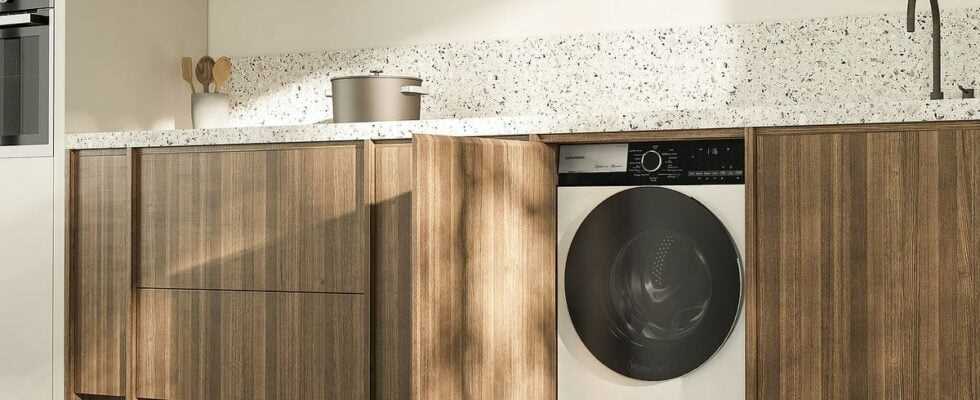3
The detergents used in our washing machines are not the only source of pollutants that these appliances release. Each cycle also releases microplastic particles that the Grundig GW7P79419W washing machine would be able to recover.
Grundig GW7P79419W
Introductory price €699
Plastic waste in our oceans has become so numerous that scientists speak of the “seventh continent”. We are quite familiar with large waste, such as plastic bags or bottles, but this pollution also consists of much smaller particles. And surprisingly, our clothes are no strangers to this phenomenon. Indeed, the nature of textile fibers has changed a lot in a few decades; cotton and wool have gradually given way to much less natural materials (and therefore less biodegradable), such as polyester or elastane. When these clothes are washed, they lose material, and the synthetic fibers thus torn are evacuated with the washing water to find themselves, ultimatelyin the seas and oceans.
To combat this scourge, Grundig has developed a special filter that is supposed to retain micro-particles of plastic to prevent them from being thrown out of the GW7P79419W washing machine. If the manufacturer remains quite discreet about the technologies used in the FiberCatcher filter so that it is able to retain 90% of microplastic residues, we know however that it is located at the level of the detergent drawer. It might have seemed logical to place it before the dirty water disposal system, but the reason is that it has to be changed regularly. Indeed, the cartridges have a lifespan of six months (or 24 cycles) at the end of which they are no longer as effective. Grundig has planned a collection system for used filters so that the recovered plastic is not thrown in the trash, at the risk of seeing it end up polluting the oceans. Note that, for the moment, the price of replacement filters is not known. To close the loop, the manufacturer indicates that the FiberCatcher filter as well as the tank (the part that contains the water in which the drum turns, which is made of stainless steel) are made of recycled plastics.
The FiberCatcher filter. © Grundig
With the GW7P79419W, Grundig takes a step ahead of its competitors. Indeed, almost two years ago, Brune Poirson, then Secretary of State to the Minister for Ecological and Solidarity Transition, announced that, by 2025, all washing machines sold in France should be equipped with such a device.
The FiberCatcher system has no effect on the general architecture of the GW7P79419W, and we are faced with a washing machine with standard dimensions of 85 cm high by 60 cm wide. It accommodates a 65 l drum capable of carrying 9 kg of laundry. To rotate the latter at a speed of 1400 rpm, Grundig chose an induction motor, without coal therefore, supposed to be quieter, stronger and more economical than a conventional electric motor.
The Grundig GW7P79419W washing machine. © Grundig
Programming is carried out using the wheel/button duo; the first to choose the basic cycle, the second to adjust the various parameters. Of course, you can also manage the GW7P79419W remotely, via Bluetooth, using a smartphone equipped with the HomeWhiz application. In addition to the classic programs (cotton, synthetic, etc.), a refresh cycle using steam is provided.
The Grundig GW7P79419W washing machine should be available next April, priced at €699.

